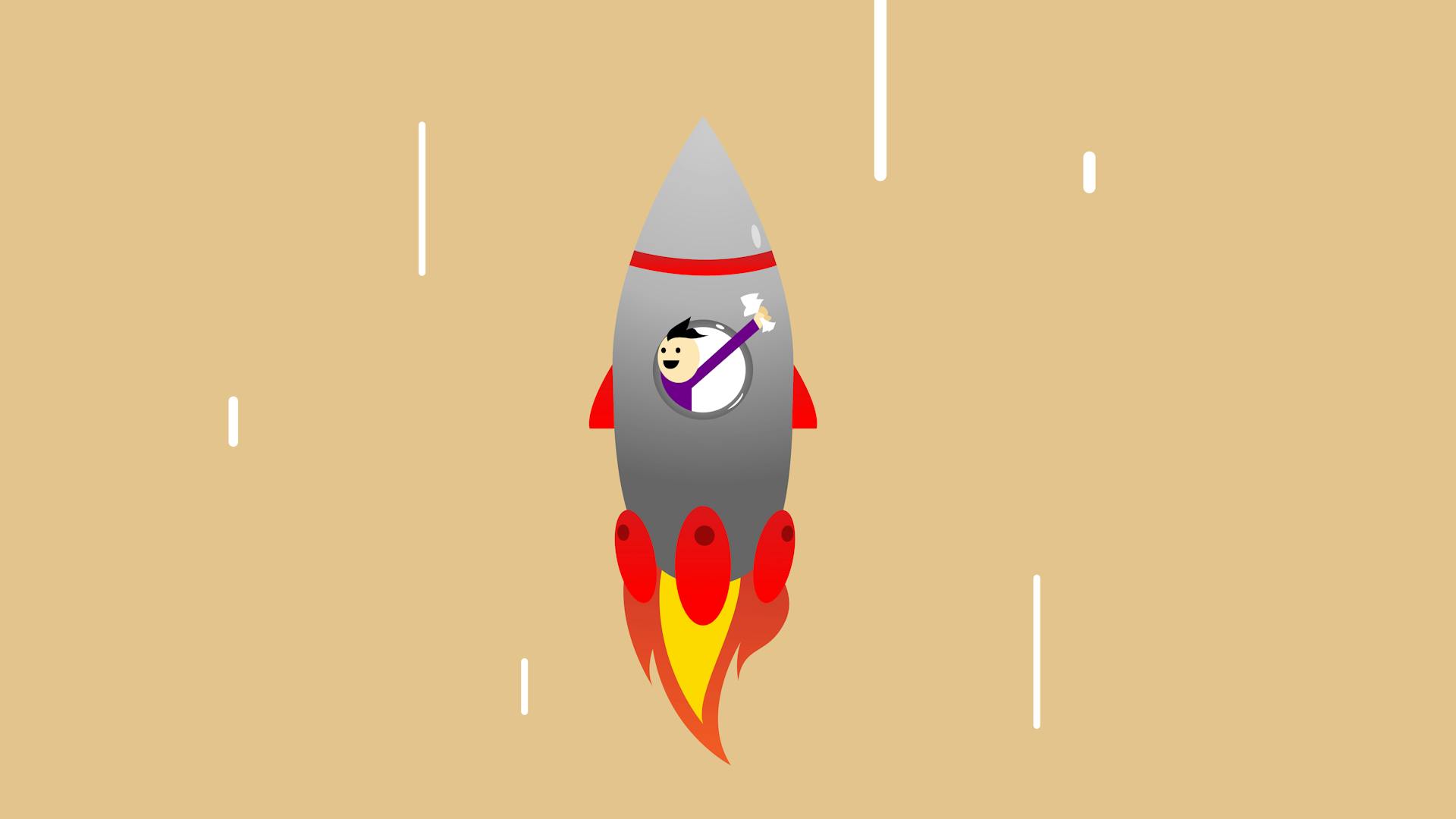
If you're in the business-to-business (B2B) industry, you may have heard of the 70 20 10 model. This learning model involves breaking down an employee's development into three categories: 70% on-the-job experience, 20% feedback and coaching, and 10% formal training. It's a popular framework used by many organizations to improve their employees' skills and performance.
The idea behind the 70 20 10 model is that most learning and development happens through hands-on experience rather than formal instruction alone. The majority of an employee's growth comes from actually doing their job, receiving feedback from others, and having access to mentors or coaches who can guide them along the way. Only a small portion of their development should come from traditional classroom-style training sessions.
If you're interested in implementing the 70 20 10 model in your organization but don't know where to start, this article will provide you with all the necessary information. Whether you're a manager looking to improve your team's performance or an individual aiming for professional growth, this learning approach could be just what you need to succeed in today's fast-paced business environment.
Check this out: B2b Strategies for Business Development
How to Improve Our Learning Process: Helpful Tips to Try
One helpful tip to improve our learning process is to incorporate the b2b 70 20 10 model. This model suggests that we should allocate our learning time as follows: 70% on-the-job experience, 20% coaching and mentoring, and 10% formal training. By focusing on real-world experiences and receiving guidance from mentors and coaches, we can enhance our skills more effectively than just attending traditional classroom-style trainings. Additionally, setting clear learning goals and regularly reviewing our progress can help us stay motivated and engaged in the learning process.
1. 70 % lärs in genom erfarenhet
The famous 70-20-10 model for learning and development suggests that 70% of learning occurs through experience, while 20% comes from social interaction and the remaining 10% is gained through formal education. This model is widely used in B2B organizations to plan their employee training and development programs.
The practical experience that an employee gains while performing their job plays a significant role in their professional growth. It helps them understand the nuances of the work they do, enhances their problem-solving skills, and enables them to apply theoretical knowledge in real-life scenarios. This is why companies focus on providing ample opportunities for employees to learn by doing, through on-the-job training, projects, and assignments. The 70-20-10 model reinforces the importance of experiential learning in a B2B setting and encourages organizations to make it an integral part of their learning strategy.
2. 20 % lärs in genom interaktion
The B2B 70 20 10 model is a learning and development framework that focuses on three areas of learning: experience (70%), exposure (20%), and education (10%). According to this model, approximately 20% of learning occurs through interaction with others.
This means that not only do we learn from our own experiences, but we also learn from interacting with others. This can include conversations with colleagues, feedback from supervisors, and collaboration with team members. By engaging in these interactions, we can gain new perspectives and insights that can help us grow and develop in our careers.
Overall, the B2B 70 20 10 model highlights the importance of both individual learning experiences and interactions with others in order to achieve professional growth and development. By embracing both aspects of this model, individuals and organizations alike can create a culture of continuous learning and improvement.
Recommended read: B2b Learn Business Spanish
3. 10 % lärs in genom att läsa och plugga
The B2B 70 20 10 model is a widely accepted framework for employee learning and development. According to this model, only 10% of learning occurs through reading and studying. The remaining 90% happens through on-the-job training (70%) and social interactions (20%).
This means that while traditional methods like reading books and attending lectures may be useful, they are not sufficient in preparing employees for the challenges of the modern workplace. Instead, organizations should focus on providing opportunities for practical learning and collaboration with others. By doing so, they can ensure that their employees are equipped with the skills, knowledge and confidence needed to succeed in their roles.
See what others are reading: B2b Deal with Unhappy Employees
Create a Successful Growth Strategy with the 70-20-10 Model

Creating a successful growth strategy can be overwhelming, but the 70-20-10 model makes it easier. This model suggests that you allocate 70% of your resources to what's already working, 20% to new initiatives that complement existing ones, and 10% to experimental ideas. This is particularly useful for B2B companies because it allows them to focus on their strengths while still exploring new avenues for growth. By using the 70-20-10 model, you'll have a clear roadmap for growth and be able to make strategic decisions that align with your overall goals.
Discover the Possibilities Opened up by the Digital World

The digital world has opened up endless possibilities for businesses in the B2B sector. With the rise of technology, companies can now leverage online resources to enhance their operations and streamline processes. One such possibility is en kurs online, which allows employees to learn new skills and stay up-to-date with industry trends without having to leave the office.
In today's medielandskap, organisations can also benefit from mentorship programs or coaching sessions to boost employee performance and develop leadership skills. These programs can be delivered digitally, making them accessible to teams regardless of location or time zone. Moreover, mentors and coaches can use digital tools such as video conferencing or instant messaging to provide real-time feedback and support.
The 70-20-10 model is another way in which businesses can harness the power of the digital world. This approach suggests that learning happens through a combination of experience (70%), social interaction (20%), and formal training (10%). With digital tools like en kurs online and mentorship programs, organisations can create an environment that fosters continuous learning and development, enabling employees to grow both personally and professionally.
If this caught your attention, see: B2b Important Customer Service Skills
How is the 70 20 10 model useful for your company’s L&D efforts?

The 70 20 10 learning model has been around for over 40 years, and it's still a preferred approach to employee training. The model diversifies employee learning experiences by not relying solely on structured learning. Instead, it emphasizes informal and experiential learning as well. By implementing this model, companies can boost employee engagement, retention rates, and enhance employee performance.
The 70 20 10 development plan encourages employees to immediately apply what they learn in formal training programs to their job-related tasks. This translates into better outcomes that generate revenue growth. It's a well-known fact that heightened employee engagement results in increased organizational qualities and net profit. Research studies show that companies which have implemented comprehensive learning models like the 70 20 10 have seen their customer satisfaction rates increase up to two times.
By encouraging peer-to-peer learning and mentoring, the model fosters high-performance teams that are able to quickly adapt to changes in the market. Furthermore, the continued access to a vast knowledge base for workers enhances their learning experiences. Structured courses are still important for achieving specific learning objectives; however, direct application of learned concepts on the job is more critical than ever before. In fact, companies that offer such opportunities are able to recruit top candidates four times faster than those with only formal training programs in place.
See what others are reading: B2b Training Objective
Discover the Key to Achieving High Development Speeds
Achieving high development speeds in a b2b setting can be a challenge. However, the key to success lies in adopting the 70-20-10 model. This model is designed to optimize learning and development by balancing formal training, on-the-job experiences, and social learning.
The 70-20-10 model suggests that employees should allocate 70% of their time to on-the-job experiences, 20% to social learning, and 10% to formal training. By doing so, they can gain practical experience while also collaborating with others to learn from their peers. This approach not only enhances skill development but also helps employees apply what they've learned in den dagliga verksamheten or daily operations. Overall, the 70-20-10 model is an effective way for businesses to boost their development speeds while improving employee engagement and performance.
Discovering the Origin of the 70-20-10 Model
Modellen kom till efter en studie av Center for Creative Leadership där de undersökte hur människor lär sig bäst på jobbet. Resultaten visade att 70% av all inlärning sker genom erfarenhet, 20% genom feedback från andra och 10% genom formell utbildning. Denna modell har sedan dess blivit en populär strategi för utbildning och utveckling i företag världen över.
Vad är 70-20-10 modellen?
What is the 70-20-10 model? This is a question that has been asked by many business leaders and entrepreneurs. The 70-20-10 model is a framework that is used to allocate resources for employee development. Essentially, it suggests that employees learn 70% of their skills through on-the-job experiences, 20% through interactions with others (such as coaching and mentoring), and 10% through formal training programs.
In order to implement the 70-20-10 model effectively, businesses need to be intentional about providing opportunities for employees to learn in each of these areas. This might involve setting up mentorship programs, encouraging collaboration between team members, and investing in training and development initiatives. By doing so, businesses can create a culture of continuous learning and development that benefits both individual employees and the organization as a whole.
Overall, the 70-20-10 model provides a useful framework for businesses looking to enhance their employee development efforts. By focusing on on-the-job experiences, interactions with others, and formal training programs in equal measure, businesses can ensure that their employees have access to the resources they need to grow and succeed within their roles.
Efficiently Boost Your Business with the Revolutionary Model

Are you looking for an efficient way to boost your business? Look no further than the 70 20 10 learning model! This revolutionary model breaks down learning and development into three fundamental steps: 70% of learning should be done through on-the-job experiences, 20% through social interactions and coaching, and 10% through formal training. By implementing this model, your employees will have a more well-rounded approach to learning and will be better equipped to handle any challenge that comes their way.
1. Pinpoint a specific skill
Pinpointing a specific skill is crucial when trying to improve B2B performance using the 70 20 10 model. By focusing on a particular ability, you can better train your employees towards company goals and stay ahead of competitors in the international market. Observations, supervisors' feedback, and self-evaluations can all help identify areas that need improvement.
One essential skill for B2B success is the ability to communicate effectively with colleagues, clients, and business associates in different parts of the world. Foreign language skills are particularly valuable in markets where English is not the primary language. By investing in language training programs, your team can build relationships with partners from diverse backgrounds and expand your reach in new markets.
2. Identify training goals
When implementing a professional development initiative using the b2b 70 20 10 model, it is essential to identify clear and concise training goals. Defining SMART (specific, measurable, achievable, relevant, time-bound) objectives can help ensure that training aligns with business goals and is effective in enhancing employee capabilities.
One example of a specific and measurable training goal could be for employees to achieve an intermediate level of proficiency in a target language within six months. This objective not only provides a clear target for employees to work towards but also has a time-bound aspect that helps keep them accountable for their progress. By identifying such training goals, organizations can ensure that their employees are equipped with the necessary skills and knowledge to drive business success.
A different take: B2b Smart Goals Examples
3. Craft and implement a 70 20 10 development plan
Crafting a 70 20 10 development plan involves dividing the learning experiences of employees into three categories: on-the-job learning, social learning, and formal learning. The OSF ratio on-the job is set at 70%, social learning portion at 20% and formal learning at 10%. This provides a flexible guideline to achieve specific training goals without being a rigid mandate for employees.
The training goals may include language learning or corporate language training. Explicit guidance from expert tutors can be provided to lay the linguistic foundation for employees to develop their foreign language skills. Social media platforms like discussion boards can enable staff to interact with native speakers of the target language. Finally, experiential learning through team challenging tasks related to job-relevant topics can significantly improve target language proficiency.
Frequently Asked Questions
Does the 70-20-10 framework work?
Yes, the 70-20-10 framework has been proven effective in many organizations for developing employees' skills and knowledge. However, it's important to customize the approach to fit your specific needs and context.
How do I implement the 70 20 10 rule?
The 70 20 10 rule can be implemented by dedicating 70% of your time to practical experience, 20% to learning from others and 10% to formal training or education. This approach can help you develop your skills and knowledge in a more balanced and effective way.
What do you learn with the 70 20 10 model?
The 70 20 10 model teaches that learning comes from three sources: 70% from on-the-job experiences, 20% from interactions with others, and 10% from formal education. It emphasizes the importance of experiential learning and collaborative work in personal and professional development.
What is the difference between 70-20-10 and 20-20-20 model?
The 70-20-10 model focuses on learning through experience, exposure, and education, while the 20-20-20 model is a method for eye care that suggests taking breaks every 20 minutes to look at something 20 feet away for 20 seconds.
Featured Images: pexels.com


